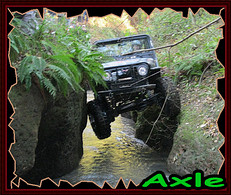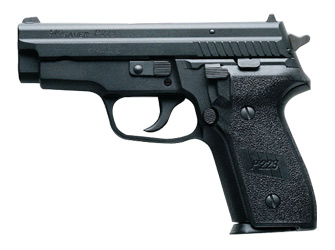Waterproofing Your Jeep’s Under Hood Electrical Components
This Document is dated August 19, 2002.
Please be sure to check my web site for any updates to this document at
http://home.att.net/~email.id/wsb/html/vie...home.html-.html
This write-up is intended to share “what and how” I have elected to waterproof the under hood electrical connectors and components in my 97 Jeep TJ. This is obviously not a completed unit of work, yet I believe you can learn from this a method that perhaps will help you in your efforts.
Please understand there is no rocket science here but you do need to do this correctly or you could cause yourself some problems.
Materials I Used
Electronic Component Spray Cleaner
This is also known as “TV Tuner Cleaner”, or “Electric Motor Cleaner”. It comes in a rattle can and can be purchased at Radio Shack or Ace Hardware and any other number of stores including some auto stores.
DO NOT use Automotive Brake Cleaning Fluid! Some folks think this is the same thing. It is not!
Brake Cleaning fluid can and probably will be detrimental to the plastic on multi-pin electrical connectors.
You could substitute rubbing alcohol in a pinch. (Isopropyl alcohol is available at Wal-Mart or your local drug store for about 88 cents a bottle.)
You will use this to give your plug connectors a good cleaning prior to making them waterproof.
Dielectric Grease
You are going to need a 3 or 4-ounce tube of Dielectric Grease. This can be purchased at Radio Shack, Ace Hardware, and Napa, even Home Depot for about $6 per tube.
I used Permatex #22058, 3oz.
Contrary to popular belief, dielectric grease is a non-conductor of electricity.
Its value for use in electrical connectors is to displace any air, moisture or other pollutants from between the pins in the connector. Dielectric grease does a pretty good job of water proofing connectors but it is not the only thing I used.
BE CAREFUL!!! Make sure the grease you buy specifically says “DIELECTRIC” on it.
There are some electrical greases that are not dielectric, but rather “Conductive”. These conductive greases contain ground up silver and are designed to promote conductivity. You do not want to use this “Conductive” grease on any multi-pin electrical connector as you can and will short the pins.
Liquid Electrical Tape
Liquid Electrical Tape can be found in Ace Hardware, Harbor Freight and any number of other hardware or electronic stores.
There are basically two types of liquid electrical tape, those that use a plastic formula and those that are rubber-based formula.
Liquid Electrical Tape comes in a small metal can with a brush applicator attached to the top. Basically you brush the stuff on and it cures at room temperature in about 30 minutes to form a waterproof, electrically insulated shell.
The plastic based stuff forms a coating very similar to that of wire insulation. The rubber based stuff forms a coating just as water proof but a bit softer in finish. Both come in Red or Black, and some manufactures make it available in other colors as well.
Star brite is one major brand that is plastic based. It costs about $6.00 per bottle.
PlastiDip makes a liquid electrical tape that is rubber base. PlastiDip also sells the same product as a tool handle dip in 14-ounce cans for about $6.00 per can. As far as I can tell, their liquid electrical tape and the tool handle dip are exactly the same product. I have used both and found hem to work equally well.
Electrical Tape
Get yourself a good roll of electrical tape
Bailing Wire
You will need a couple of feet of bailing wire, or solid copper wire. (Bare with no insulation on it.).
How To Waterproofing an Electrical Connection
Disconnect the battery.
Clean
Prior to waterproofing any connection, be it a multi-pin connector or the TPS you want to make sure all the connector pins are clean.
Unplug the connector you want to work on and clean both the connector and the pins on the component you are working on with the electronics parts cleaner (or alcohol).
Spray the cleaner on and then blow away the fluid with compressed air. This will insure all moisture is removed and help to get rid of any contaminants that may be on the contacts.
Fill With Dielectric Grease
Fill both sides of the connector with Dielectric Grease and then plug the connectors back together.
If you want to get carried away here that is probably goodness. You want the dielectric grease to completely fill any air space inside the connectors when they are plugged together. If the air space is filled with grease there is little chance water can enter into the connector and cause a problem.
If the grease squeezes out after plugging the connectors together just wipe it up with a rag.
Enable Disassembly
Most connectors, be they multi-pin male to multi-pin female, or a multi-pin connector to a sensor will have a locking tab or key that must be lifted or pressed in to disconnect the unit.
Find that key.
What you want to do is wrap a piece of electrical tape completely around the body of the connector, covering the locking key.
This tape is being used to prevent the Liquid electrical tape from flowing behind the “locking key” so that at some later date, if you have a need to disconnect this connector you can do so without any difficulty.
Once the electrical tape is around the connector, covering the locking key, take a small piece of bailing wire and wrap it around the connector directly on top of the electrical tape. Attach it by twisting it onto itself like you would a garbage bag tie.
This bailing wire will be used in the future if you should ever have a need to disconnect this plug. All you will need to do is unwind it and pull on it to cut the Liquid Electrical Tape Covering like a wire cuts through a block of cheese.
Waterproof
OK, you should now have a clean connector that you filled with dielectric grease.
The connector should have one piece of electrical tape covering the key lock, and one strand of bailing wire wrapped and twisted around the connector.
Now all you need to is cover the connector in Liquid Electrical Tape.
Brush it on. Cover the enter connector. The liquid tape has the consistencies of honey.
Pay particular attention to the outside of the connector where the wires go into the plug from the backside.
Fill these holes with liquid electrical tape.
In all likelihood you will need to use multiple coats to completely seal the connector. Most of mine were sealed with two coats, but some did require three.
The Liquid Electrical Tape dries to the touch in about 20 minutes, but take a full 4 hours to cure. You can usually brush on a second or third coat after about 15 minutes.
Coat it well. You are sealing it and making it waterproof. You don’t want any holes.
I have found the brush that come on the bottle of liquid tape to be a bid too big to work with in getting this stuff into the holes where the wires enter. I used a small watercolor paint-by-number set paintbrush to do this. I think a “Q-Tip” may work well too.
Let the liquid tape set up. When it does you will find a nice waterproof shell completely sealing the connector.
This seal will come off it you have a need to, but you have to peel it away with your fingernails. That is why I used the bailing wire.
If you untwist it and pull on the bailing wire it will cut through the seal and allow you to more easily separate the connectors.
The electrical tape you placed over the connector key lock prevents the liquid tape from flowing under the key lock so the key lock will remain operational for you.
What have I used this on?
I have waterproofed every electrical connector under my TJ’s hood, including the headlight plugs. I have also waterproofed the computer and the TPS unit, which seams to be most abused when it comes in contact with water.
To do the TPS unit right you will need to take the Throttle Body off the intake manifold. This will enable you to waterproof the bottom as well as the top.
I used the method I described above to do this. In addition, I coated the joint between the sensor and the throttle body with liquid electrical tape as well.
I was a bit concerned about the temperatures and what effect if might have on the liquid electrical tape, but so far I have seen no ill effects. It’s been there about 3 months now.
I also waterproofed the computer where it is bolted to the firewall in much the same manor. I unbolted it from the firewall so I could get to the backside of the connectors, and then simply followed my own process. (clean, dielectric grease, tape, wire, coat with liquid electrical tape.)
I also ran a bead of liquid tape over what appears to be a seam in the computer box. Again, to date no ill effects.
WARNING NOTE:
DO NOT under any circumstances use RTV or Silicon as a substitute for the liquid electrical tape or in any way on any electrical component. RTV uses acetic acid as part of the curing agent and that stuff will destroy your electrical connections.
I cannot over emphasis this caution.
The liquid electrical tape is 100% safe and will form a solid, yet pliable and removable water and oil tight seal.
At the moment I am unable to provide any pictures of my waterproof connectors, but hopefully I will be able too shortly.
To date my testing has consisted of verifying there are no ill effects to this method, that the Liquid Electrical Tape holds up to the under hood temperatures, and that a running hose placed directly on top of my TPS for 15 minutes has caused no problems.
Give it a try; I know you will be happy with the results.
Please be sure to share your experiences and tips on how you have applied this idea to specific components on your Jeep.
Side note:
I applied dielectric grease to the inside of all spark plug and coil wires. While I have not done so yet I do plan on coating the wire to distributor cap connections with Liquid Electrical Tape. I also plan to coat the seam between the distributor cap and the distributor with the liquid tape as well.
I hope you will find this useful. I do plan to do a much better write-up with pictures of my applications as soon as I am able to do so. In the mean time, try it out for yourselves.
For around $10 to $15 and a bit of your time you can make a giant step forward in waterproofing the vast majority of those things under the hood that get in trouble when they get wet.
Frank
Page 1 of 1
Waterproofing Under Hood Electrical
#2

Posted 04 August 2007 - 09:09 AM
Good info to remember for those of you who are coming back from Big Cypress.
*MY CJ IS YOUR yJ's DADDY*
'48 Willys; '74CJ5; '80CJ7; '84 CJ8; '86 CJ7
*Who Needs A Stinking Manual When You Have A Fat Wallet For Tech Support!*
*What man is a man who does not make the world better*
Support the Central Florida Bible Camp for kids
'48 Willys; '74CJ5; '80CJ7; '84 CJ8; '86 CJ7
*Who Needs A Stinking Manual When You Have A Fat Wallet For Tech Support!*
*What man is a man who does not make the world better*
Support the Central Florida Bible Camp for kids
#3

Posted 17 August 2007 - 05:12 AM
Thanks Trannydoctor is putting a Snorkel on my jeep next week for our Clewistion run so now I can button it all up. 
CEO of Black Sheep 4x4s
http://www.blacksheep4x4s.org
https://www.facebook...acksheep4x4sorg

Member of CCJ
White Jeep Club Member #137
http://www.blacksheep4x4s.org
https://www.facebook...acksheep4x4sorg

Member of CCJ
White Jeep Club Member #137
Share this topic:
Page 1 of 1

 Help
Help







